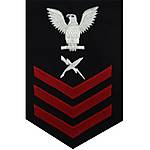1⁄35Building a Diorama from Scratch
Choosing your Paint Medium
There is much to be said about the choices of paint you will use as an artist.
The primary selections will be water-based acrylics, lacquer-based enamels, or
artist’s oil paint. Each has it’s own strengths and weaknesses, so discussing
the merits of each for the novice and intermediate builder will be beneficial.
If you are already a more experienced artist, feel free to follow along, or skip
to the next section.
|
|
Acrylics
I have always preferred acrylic paints in most hobby applications, for a variety
of reasons. First, it is available in a great variety of premixed colors, and is
one of the least expensive paints. While I still use oils and enamels in some
applications, Acrylics are so inexpensive (the brand I often use only cost $1
per color!) I can afford to save time and money by simply buying a nice variety
of colors to keep on hand for ready use. Rarely do I make a trip to my local
craft store without picking up at least a few replacement colors and a few new
experimental colors for my paint rack selection.
Second, acrylics apply and clean up easily. It is fairly simple to “re-do” if
you accidentally make a mistake. Usually, when I see a blatant error (such as
spilled paint) I can simply load up a clean brush with acrylic thinner, and
dilute the ill-placed paint to the point that it can easily be blotted up or
washed away.
Third, acrylics provide beautiful color, depth, and finish. Acrylic dries quickly and
once allowed 12-24 hours, it forms a wonderfully durable finish. If applied
correctly, it also leaves a fine flat finish, devoid of any brush marks.
Finally, acrylics are versatile. They can be used straight from the bottle with
your brushes for more brilliant color, or can be thinned with distilled water or
alcohol for use in your airbrush.
All this said, there are two drawback to acrylics –first, it doesn’t provide
good depth in certain colors… flesh tones, shades of white, and most yellows
often require considerable re-coating to achieve the desired effect and hue.
Typically, I use oils for flesh, and undercoats for whites and yellows. Second,
because acrylics dry so quickly, they can often clog the tip in your airbrush if
there is not enough moisture in your paint mix.
|
|
Enamels
Enamels provide a hard, super smooth coat that is durable over the course of
time. Enamels are typically sold in small tins or glass jars, and while more
expensive than acrylics, are still somewhat economical, as a little goes a long
way.
Enamels take longer to fully cure (24-48 hours in some cases), and touching the
paint too early will commonly result in a fingerprint or two that will be hard
to remove. Likewise, enamels dry “hard” and are much more subject to flaking or
chipping than either oil paints or acrylics. They also require a little more
diligence in storing… if paint dries on the cap, it may allow air to leak in
during storage, thus drying out a full bottle of paint.
While enamels can be used with a brush, more pains must be taken to insure
clean, even flow. If the paint is too dry, it thickens and is prone to leave an
uneven finish. As the thickest type of paint, it is also prone to “layering”…
the effect that takes place when multiple coats are applied in some areas but
not others. The paint builds up, and forms a visible ridge between heavy and
thin-coated areas.
While enamels are very popular with airbrush artist, more care must be taken in
their use. The finely atomized spray is very dangerous to breathe, and it will
travel farther in the nearby air than will acrylic paint. Always use airbrushed
enamels in a well-ventilated space, and far away from other things like
furniture, your car, or clothing. And as with all airbrushing, a breather mask
or air filter well fitted to the face is a must.
|
|
Oils
There is nothing as vibrant as the depth, hue, and color offered by oil paints.
Nor is there a more expensive paint for use in hobby painting. This is because
the methods for making fine oil paints are done about the same way they have
been done for centuries. Unlike the acrylic or enamel paints, some colors of oil
paint even cost more than others from the same maker. This is because the
chemicals used to make certain shades are more expensive than ingredients in
other tones. Still, oils go a LONG way, so the overall cost is not so bad.
Oils are most typically not an airbrush medium, although this can be done in
certain ways, and is most typically done to create an ultra-thinned wash. More
often, oils are custom-mixed using a few base colors to create a palette of
shades, and then applied with brushes.
Oil paints also take longest to dry — often from 24 to 72 hours, depending on
the surface painted, the temperature and the humidity of the surrounding air.
This can be a great advantage however, particularly when blending custom colors,
or shading areas to provide a more natural, realistic effect. And, as you have
probably read elsewhere, when it comes to painting the flesh on faces, hands,
arms, etc., nothing beats the blending ability of oils. Oils also provide a
strong, durable finish and the colors remain vibrant over time.
Other Miscellaneous Paint Related Considerations
Air Brush vs. Paint Brush
I enjoy using a paintbrush in almost all instances. I feel it gives me the
greatest sense of control, not only in placement, but also in creating effects,
such as grain and texture. The airbrush is primarily reserved in my studio for
three tasks…
· Softly blending colors, as in the creation of water, or in creating tricky
camouflage effects
· Covering large areas with a super thin but totally solid coat of a color or
perhaps paint sealer
· Creating ultra fine weathering effects, such as stains or rust streaks
Primers
I suggest undercoating primers and color paints be of different mediums. For
example, in this diorama project, I am using Acrylics as my painting medium,
while my primer and sealers will be enamel based. This allows me to mix the two
together on the same object, without the fear that the application of one won’t
react or blend in with the other. As acrylics are water-based and enamel is
lacquer based, their mediums won’t interfere with each other. There is nothing
worse than applying paint over a primed surface, only to see the paint begin
eating into the primer, or seeing your paint change color by blending in with
the undercoat.
As the basis of this article is mainly geared toward the novice or intermediate
builder, all work done can be assumed to be by brush, unless specified
otherwise. While I may discuss a certain technique used for a specific task in
this project, for more information on painting techniques with an airbrush,
there are a multitude of fine articles and books on the subject that will teach
far more than I will attempt here. This being said and done, we are ready to get
down to some fun and work….














